Whether at home or at school, naming numbers and counting has been at the core of preschool mathematics. It is the beginning of developing number sense. Giving your preschoolers the tools they need to succeed in math is essential, and this is your ultimate guide to teaching number sense in preschool!
What You Need to Know About Teaching Number Sense in Preschool
Teaching number sense in preschool takes careful planning, and this is your ultimate guide to becoming a successful parent-teacher in teaching number sense to your preschooler.
Because giving your preschooler a solid foundation in number sense it is more than just naming numbers and counting.
What is Number Sense?
Number sense encompasses a broad understanding of the concept of numbers. It refers to a child’s fluidity in numbers, including:
- quantification (knowledge of specific quantities)
- number identification (naming numbers)
- number order and sequencing
- counting with one-to-one correspondence (each number corresponds to one specific quantity)
- cardinality of number (recognizing that the last number said when counting is the number of total objects)
- conservation of number (understanding that the number of objects is always the same even when rearranged)
- subitizing (automatic recognition of set quantities)
- composing numbers (addition)
- decomposing numbers (subtraction)
- understanding of mathematical symbols ( +, -, ÷, x, = )
Whew! That’s a lot!

While not all the above are developmentally appropriate for preschoolers, they are all interlinking under the mathematical discipline of number sense.
And since many researchers agree that a strong foundation in number sense directly relates to a child’s overall success in math, teaching number sense to preschoolers is a bigger task than some might initially think.
Number sense refers to the understanding of how numbers work, not just simple counting. It will take some time for children to master these important skills.
Number Sense is Really Important, and Here is Why
Number sense is the key to successful math skills for children.
It’s a Strong Indicator of Mathematical Achievement.
Number sense skills in the early years is a strong indicator of overall mathematics achievement. Early childhood educators have the important responsibility of constructing the foundational mathematical knowledge and skills that preschoolers will need for future learning in math. And while this is true for all children, it is especially true of children who come from low socioeconomic backgrounds. (Source: Teaching Mathematics in Early Childhood)
It Shows How Mathematics is Systematic and Consistent.
A strong foundation in number sense also teaches children to be flexible in their problem solving. In this, children learn that numbers are meaningful and despite manipulation, their outcomes are constant and sensible. (Source: Teaching Preschool and Kindergarten Math) On the other hand, children who lack in number sense skills have difficulty performing even the most basic mathematical algorithms.
Math Simply Cannot Happen Without It.
Remember that number sense includes a gripping understanding of HOW numbers work. Not only does this ensure preschoolers will be able use addition and subtraction in years down the road, as well understanding how these operations are related with each other, but number sense plays a supporting role in all math disciplines.
In short, it’s a critical part of preschoolers’ early education that sets them up right from day one.
How to Teach Number Sense in Preschool
While developing number sense has a broad scope, there are many preschool math activities that teach a range of number sense skills. When taught deliberately and frequently, children coming from preschool programs who consistently teach these components are better prepared for learning more complex math.
Let’s dive in to each skill set in number sense!
Number Sense Skill – Quantification
Quantification is the ability to recognize that all numbers are associated with an exact quantity, and the ability to recognize sets of objects, such as pips on a dice. This is sometimes referred to as subitizing.
Subitizing is the ability to automatically recognize quantities without counting. It’s like sight reading sets of objects. Here are some real-life examples:
- Shoes come in pairs
- Pipes on a dice
- Cupcakes in a box or on a tray
- Recognizing tally points
- Wheels on a tricycle
- Animal feet on quadrapeds
These are all examples of how quantification, or subitizing, is used in real life. In a way, it is recognizing patterns in sets.

Students can use pattern recognition to discover essential properties of numbers, such as conservation and compensation. They can develop such capabilities as unitizing, counting on, and composing and decomposing numbers, as well as their understanding of arithmetic and place value—all valuable components of number sense.
Source
Subtilizing Activities for Preschoolers
Educators, such as Fitzhugh, then realized that while some children could not count the specific units of a number, they could subitize the units making up small sets before them, thus supporting the notion that subitizing is a precursor to counting.
Source
Apple Drop Counting teaches preschoolers about composing ten, as well as subitizing.
Valentine’s Subitizing and Graphing Game is always a crowd pleaser. It targets subitizing, but also include skill work in number identification, counting, and graphing.
This song from Harry Kindergarten teaches subitizing with a fun pirate theme!
Number Sense Skill – Rote Counting
Rote counting is like taking your first steps into the world of numbers. It’s often done as early as 2 years old, and practiced throughout elementary school.
Rote counting in the ability to count out loud in a sequential order. When children are first learning to rote count, they copy patterns they have heard — 1, 2, 3, 4, etc., but do not necessarily attach a value or quantity to the numbers.
Rote Counting Activities for Preschoolers
Rote counting is a cinch to practice because there are so many fun and engaging ways to practice, and they don’t take any prep at all!
- Practice rote counting in different voices and in different places. Practice in the car in a silly voice, or on the potty in a grumpy voice, etc.
- Sing nursery rhymes that feature counting or find catchy songs on YourTube. Here is one of our favorites.
Number Sense Skill – Number Representation
Number representation is the ability to identify the number that corresponds with a quantity. This is also called number identification or number recognition. For example, it is the ability to identify that the symbol 6 refers to the word “six” and the same quantity.
“At its most basic level, numeral identification is a form of shape recognition, which can result in a simple association of the word “two” with the symbol ‘2’ without a cardinal meaning”
Source
This means number recognition can develop at a different time than number value.
Number Identification Activities for Preschoolers
-
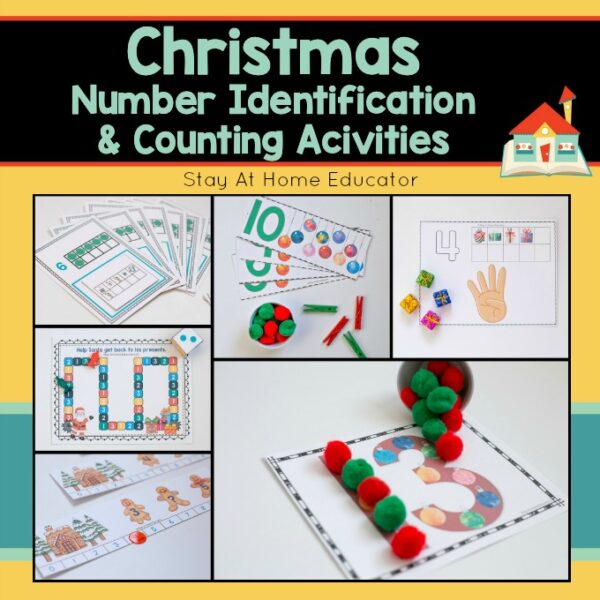 Christmas Number Identification and Counting Activities for Preschoolers$9.00
Christmas Number Identification and Counting Activities for Preschoolers$9.00 -
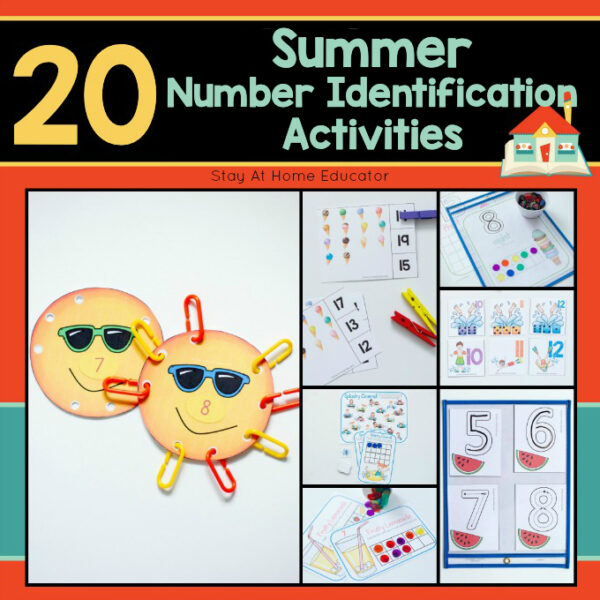 Summer Number Identification Activity Pack$15.00
Summer Number Identification Activity Pack$15.00 -
Product on sale
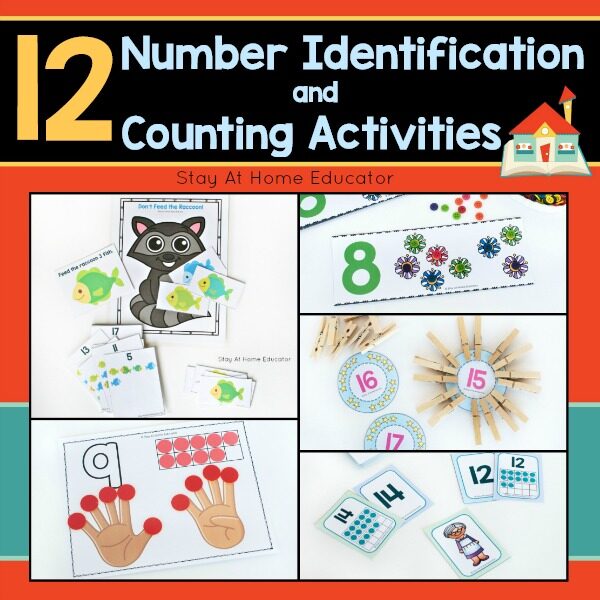 12 Number Identification and Counting ActivitiesOriginal price was: $12.00.$9.00Current price is: $9.00.
12 Number Identification and Counting ActivitiesOriginal price was: $12.00.$9.00Current price is: $9.00.
Number Sense Skill – One to One Correspondence
Counting is the skill of matching set of objects with their corresponding number name. This is sometimes referred to as one-to-one correspondence, or 1:1 correspondence. It is that ability to count 1, 2, 3, while distinguishing that there are indeed three objects that were counted, no more and no less.
This is critical to building number sense and even mental math skills.
The one to one correspondence stage is the first step in teaching children about counting in reference to quantities. At this point, they start understanding that each number represents a specific quantity and recognizes numbers as symbols for showing how many objects there are present.
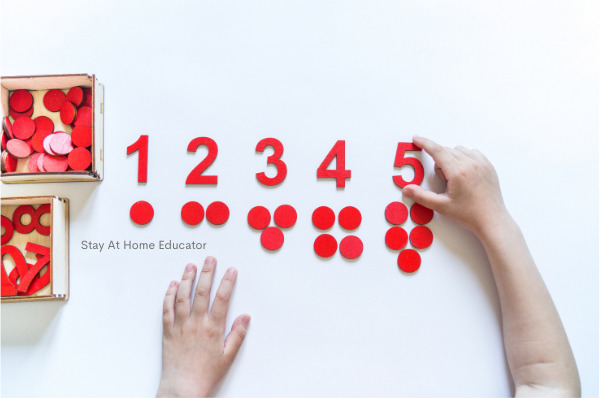
One to One Correspondence Activities for Preschoolers
There are so many great ways to teach preschoolers to master one to one correspondence in counting. Here are some simple ideas to get you started, and they don’t require any kind of prep, either!
- Count stairs as you walk them.
- Count snacks on your plate.
- Count things in the car, like stop signs or bus stops.
- Count toys as they are put away.
Additionally, you will enjoy these free counting printables for preschoolers. They feature working those 1:1 correspondence skills while counting to ten or counting to twenty, even.
Number Sense Skill – Cardinality
Cardinality is the ability to count each object individually and correctly declare how many items there are in a set. It’s recognizing that the last number said when counting is the number of total objects in the group.
And this is a big step in developing number sense skills in preschool.
During this stage, students may begin to recognize patterns such as the five-frame and know how many objects are in sight without having count them. Remember, this also falls under quantification skills, and is called subtilizing. So, skill work in one to one correspondence also simultaneously develops subtilizing skills.
-
Product on sale
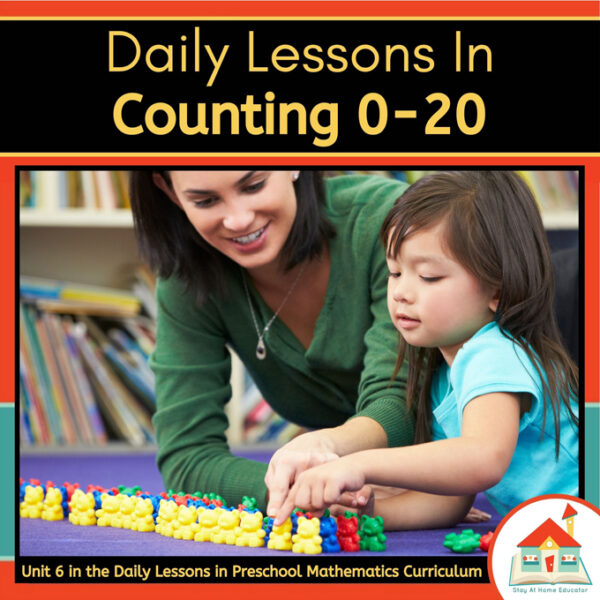 * Daily Lessons in Counting Preschool Math Unit BundleOriginal price was: $48.00.$39.00Current price is: $39.00.
* Daily Lessons in Counting Preschool Math Unit BundleOriginal price was: $48.00.$39.00Current price is: $39.00.
Number Sense Skill – Conservation of Number
Conservation of number shows that the child is able to understand that a number of objects remains the same even when rearranged. Objects can be in a straight line, or scatter all about. The quantity remains the same on matter the arrangement.
Conservation of number also includes the understanding that the quantity remains the same when the same objects are swapped out. For example, five cars is the same as five crayons because the quantity of five remains the same. (This plays into one to one correspondence as well.)
Number Sense Skills – Composing and Decomposing Numbers
Decomposing and composing numbers, in short, is the ability to break apart a given number and put it back together again. Simply put, it’s basic subtraction and addition skills.
Composing numbers is taking two parts and adding them together to make a whole. Decomposing numbers is taking a whole part and breaking it into parts.
Addition and subtraction skills can easily be introduced in preschool with practice in composing and decomposing numbers. During preschool, little, if any, mathematical symbols are used.
Here are some practical learning activities and math games to practice addition and subtraction skills with your preschooler.
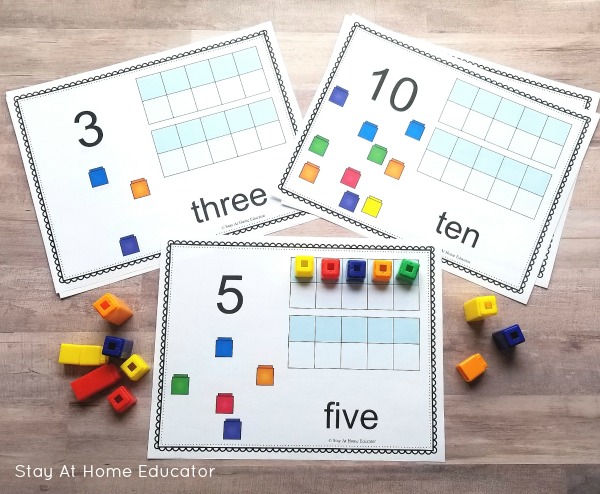
- Make number quantities on five and ten frames. Start with a smaller number, and fill in the five or ten frame to complete the number.
- Count snacks. Give your preschooler a few crackers, for example, and then tell them to take a few more until they reach a certain number.
- Do the above activity in reverse by asking your preschooler to split the total number of crackers between two children.
- Use music! This is one of our favorite YouTube videos about composing numbers.
Addition and Subtraction Activities for Preschoolers
A Word to the Wise About Teaching Number Sense in Preschool
If you’ve read the last 1,700 words of this guide, you may have more questions. Remember, teaching number sense to preschoolers is an incremental process, so don’t feel overwhelmed.
It’s like weight lifting.
If you want to build muscle and strength, you need what is called “gradual progression of overload”. This simply means that over time, you gradually add more weight because your body has mastered lighter sets.
In a way, the same is true for teaching number sense. As preschoolers master different skills in number sense, we can add a little more difficulty, or add completely new skill that feeds off the old one.
Take Out the Guesswork!
This Preschool Math Curriculum is designed to teach your preschooler all five disciplines of math without the boring worksheets!
Including nine individual math units, the Preschool Math Curriculum is systematically designed. No need to wonder how to approach preschool math, this curriculum lays it out for you but is flexible enough to be tweaked for the needs of your students.
Included are 36 complete weeks (soon to be 40 weeks) of math instruction, featuring over 325 new and unique hands-on activities. And, that doesn’t even include the 72 printable and reusable centers to support a play-based instructional approach.
-
Product on sale
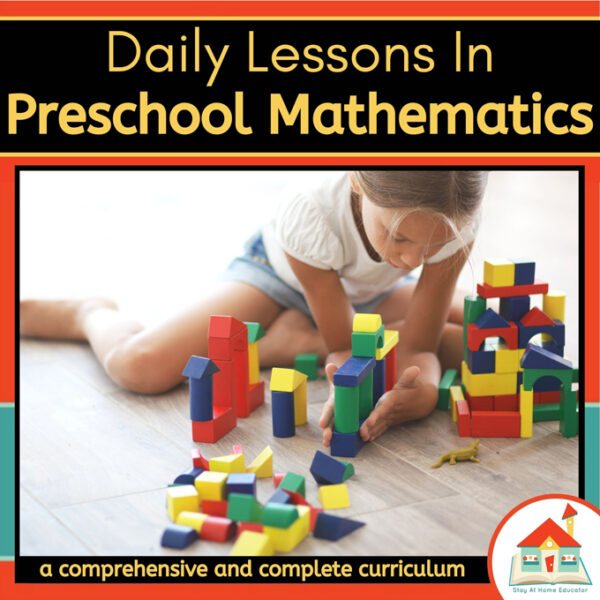 *** Daily Lessons in Preschool Mathematics CurriculumOriginal price was: $135.00.$99.00Current price is: $99.00.
*** Daily Lessons in Preschool Mathematics CurriculumOriginal price was: $135.00.$99.00Current price is: $99.00.

I’m Sarah, an educator turned stay-at-home-mama of five! I’m the owner and creator of Stay At Home Educator, a website about intentional teaching and purposeful learning in the early childhood years. I’ve taught a range of levels, from preschool to college and a little bit of everything in between. Right now my focus is teaching my children and running a preschool from my home. Credentials include: Bachelors in Art, Masters in Curriculum and Instruction.
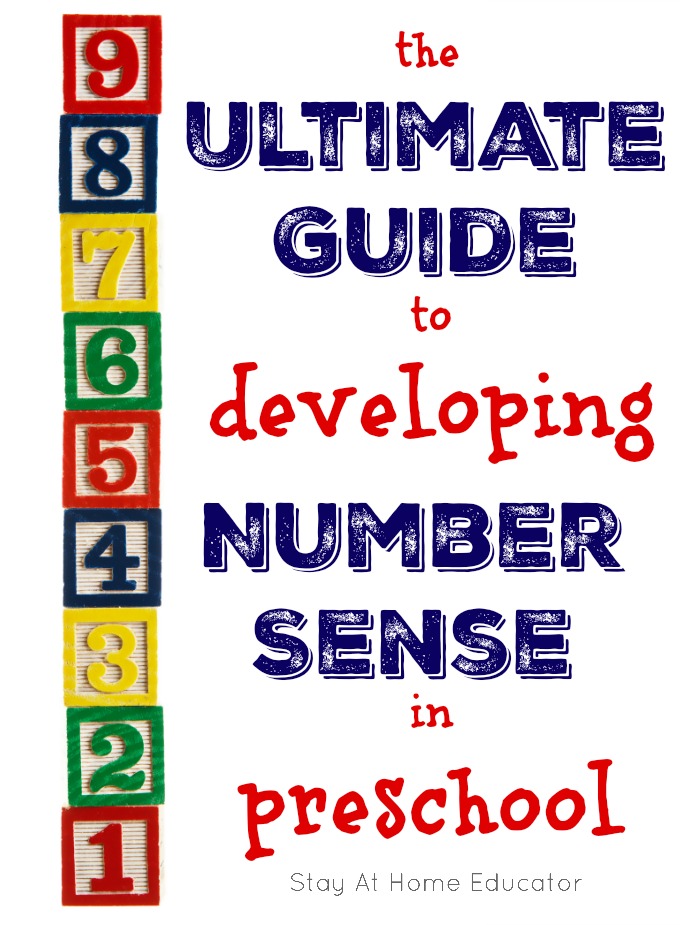

[…] can read more about how to develop all these number sense skills in this post here. Did you read that article? It’s pretty clear how important number sense is to […]